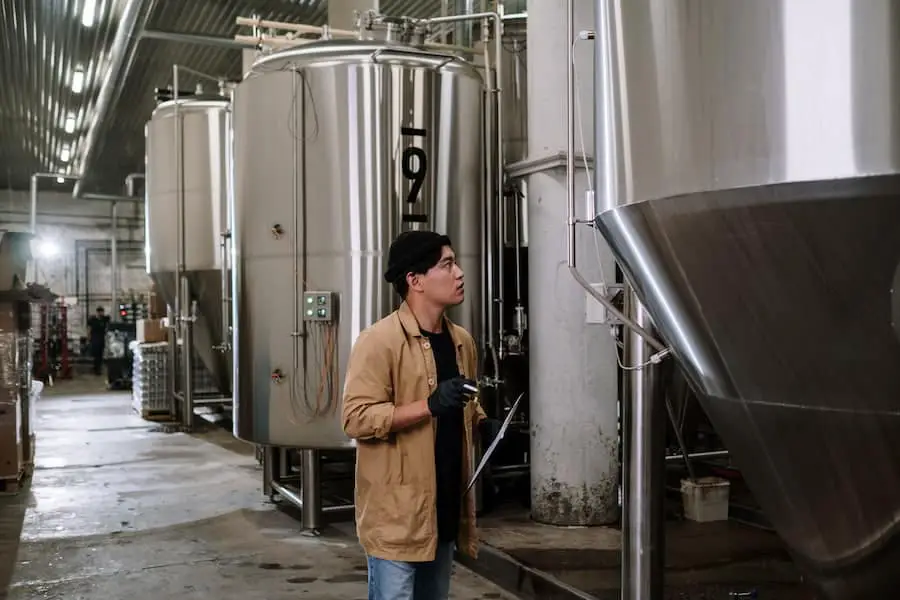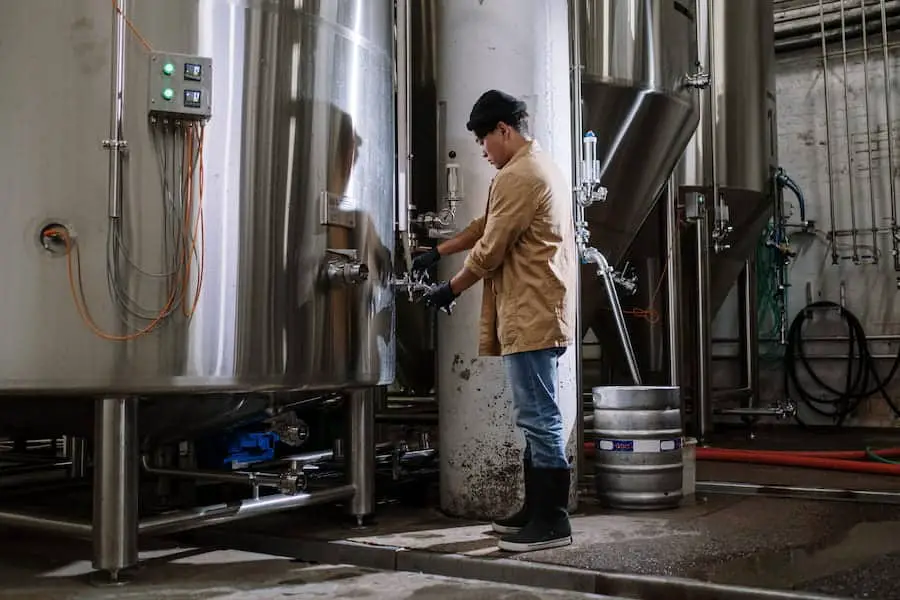If you buy something through a link in our posts, we may get a small share of the sale.
Most brewers usually become impatient after setting up this process, and they are constantly checking to see whether the brew is fermenting. There is little to do after setting up the fermentation process since most of it is self-driven. In this article, we will learn how to tell when the mash is done fermenting.
Contents
How to Tell When Mash Is Done Fermenting
Most amateur brewers usually make the mistake of gauging the fermentation process using the fermenter’s airlock. The airlock ensures that nothing enters the fermenting beer while letting go of the built-up carbon dioxide. Thus, do not be mesmerized by the ‘gloop’ sound made by the airlock every few moments.

Typically, the best way of determining whether your mash is done fermenting is using either a refractometer or hydrometer. These devices are used to check the level of sugar in the beer.
Once you notice that the airlock is no longer bubbling and the krausen layer formed has fallen, it is high time you consider measuring the gravity of the mash to confirm whether the fermentation process is complete or not.
The Procedure of Using a Hydrometer in Mash Fermentation
Below is the procedure of using a hydrometer to determine if the mash fermentation process is over.
- Measure the mash’s gravity before adding yeast. The reading will be above 1.0 since sugars are still present in the mash. The reading drops towards the fermentation end as yeast consumes these sugars.
- Fill about 2/3 Inch of the hydrometer tube with the mash you want to test.
- Insert the hydrometer gently without dropping it, then spin it lightly to remove the air bubbles that form.
- Read the point at which the surface of the mash cuts the hydrometer’s scale. The fermentation process is over if the devices indicate a stable specific gravity reading over about three days.
Alternative Way to Check the Fermentation Process
You can still check if the fermentation process is complete using your eyes. It would help if you fermented the mash in a glass carboy to use this method since a plastic one leaks oxygen with time, thus contaminating the beer.
After setting up the fermenter, the yeast takes twenty-four hours at most to undergo the respiration process. It then forms a bed at the carboy’s bottom. When active, it starts swimming, spiraling, and diving in the beer in a continuous random motion to create a dense rocky head on the top of the brew.
The activity lasts for about three to four days. The fermentation process should not be vigorous, lest you will lose precious beer. When this fermentation phase subsides to cease the blow-off, the rocky head on the top of the brew thins into a foam layer.

Secondary Fermentation
However, the beer might still be active, and you will notice that it shoots a stream of bubbles every two seconds. This is secondary fermentation, and it may take four to seven days depending on the yeast strain, original gravity, and fermentation temperature.
The yeast will form a thin skin over the brew when the whole process is done, i.e., primary and secondary fermentation. This acts as an in-built mechanism for preventing the beer from oxygen contamination.
What Is the Most Important Part of Fermentation?
The most important part of fermentation is controlling the fermentation temperature. It determines the quality of the end product and the duration of fermentation. Ale and lager yeasts have different temperature ranges in which they work best.
If the fermentation temperature is low, then the fermentation process is relatively slower compared to when this temperature is high. However, going beyond these temperature ranges results in a beer with unwanted attributes and flavors.
The Falling of the Krausen Formed
When the fermentation process is actively taking place, there is a formation of a foamy krausen layer on top of the wort. Although the krausen basically protects the wort from infections, you can use it to determine whether the fermentation process is complete or not.
Typically, the krausen consists of hop oils, proteins from the wort, yeast cells, and other residues. In most cases, it starts to form during the first 24 hours after pitching the yeast when the fermentation process is rigorous.
When the fermentation process starts to slow down towards completion, this layer starts to subside and eventually flocculates. Once the mash is done fermenting, this krausen layer sinks in the fermenting vessel. This allows you to gauge how the fermentation process is progressing and when it is ending.
What Is the Next Step After Fermentation?
First, you should allow the brew to rest in the fermenter for a few days after the fermentation process. It allows the brew to settle and clear out while the yeast flocculates at the fermenter’s bottom. Lowering the temperature in this process helps in clearing the beer.
After this, maybe you can immediately package the beer or add it with additives depending on its type.

Frequently Asked Questions
What Is Stuck Fermentation?
Stuck fermentation refers to a fermentation that stops just before the whole sugar amount in the mash gets converted to alcohol and carbon dioxide. It can be noticed when the airlock slows down before the brew reaches its final gravity. When this occurs, rice hulls are added to prevent the mash from getting stuck while brewing.
Should I Stir the Mash?
Yes. Stirring helps in synchronizing the mash’s temperature while mixing the contents more thoroughly. It involves opening the mash tun and exposing the contents to cooler temperatures. If possible, consider stirring the mash more often during the saccharification rest.
Can I Move the Brew During Fermentation?
You can move the fermenter though it is entirely unnecessary since it can alter the fermentation temperature and ruin the quality of the end product. Be cautious not to agitate the fermenter when moving it and ensure that it is always sealed. In addition, move it to somewhere with a controlled temperature to prevent any potential issue.
Conclusion
It is quite easy to tell when your brew is done fermenting. The process involves basic observation skills. You might not even need to use a hydrometer unless you want to record the readings.

